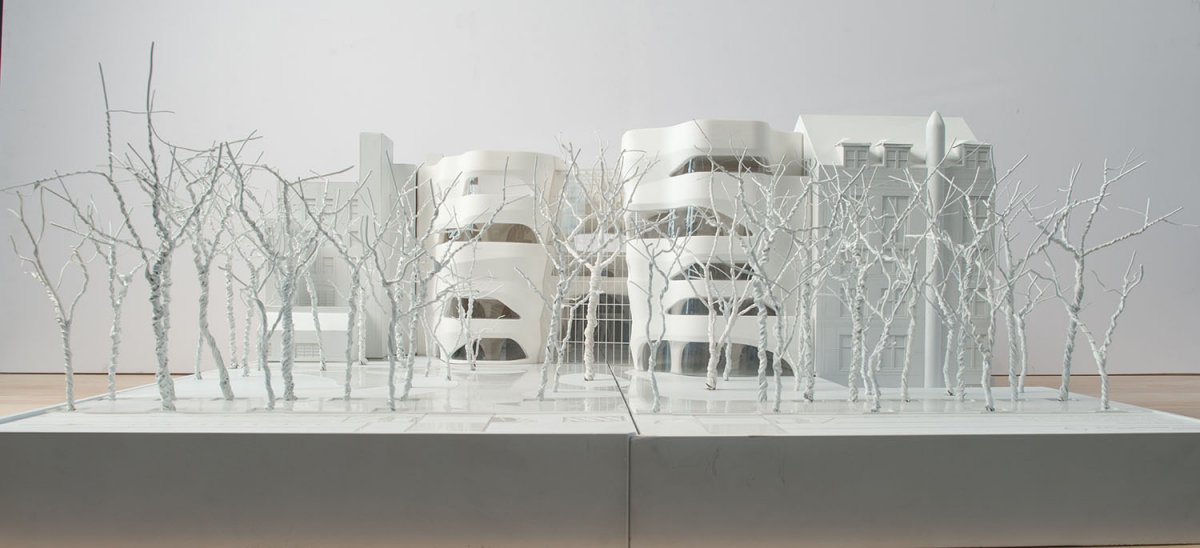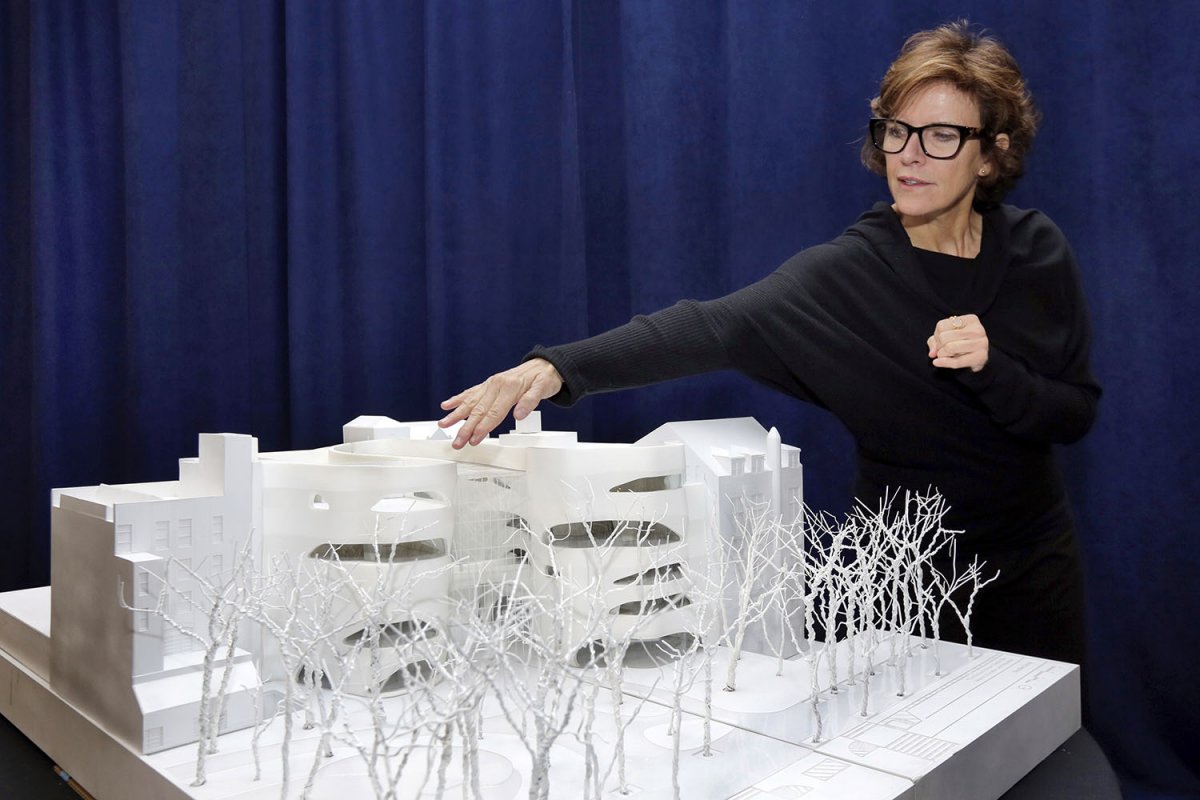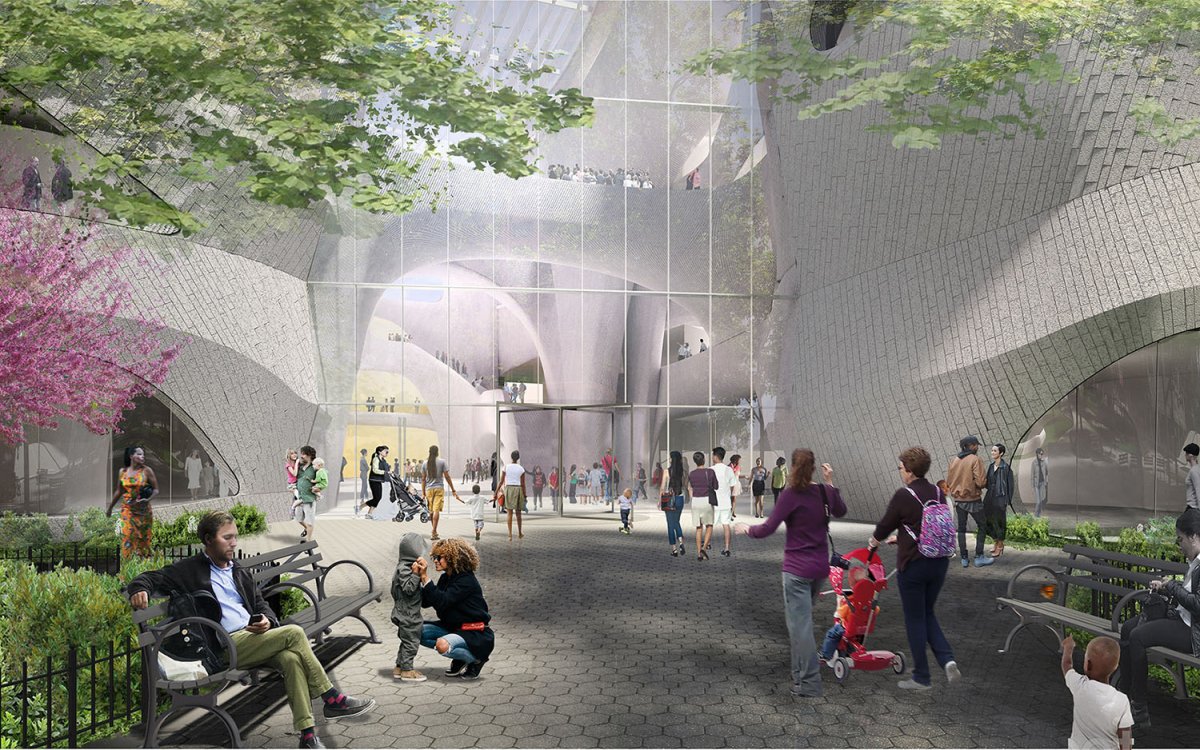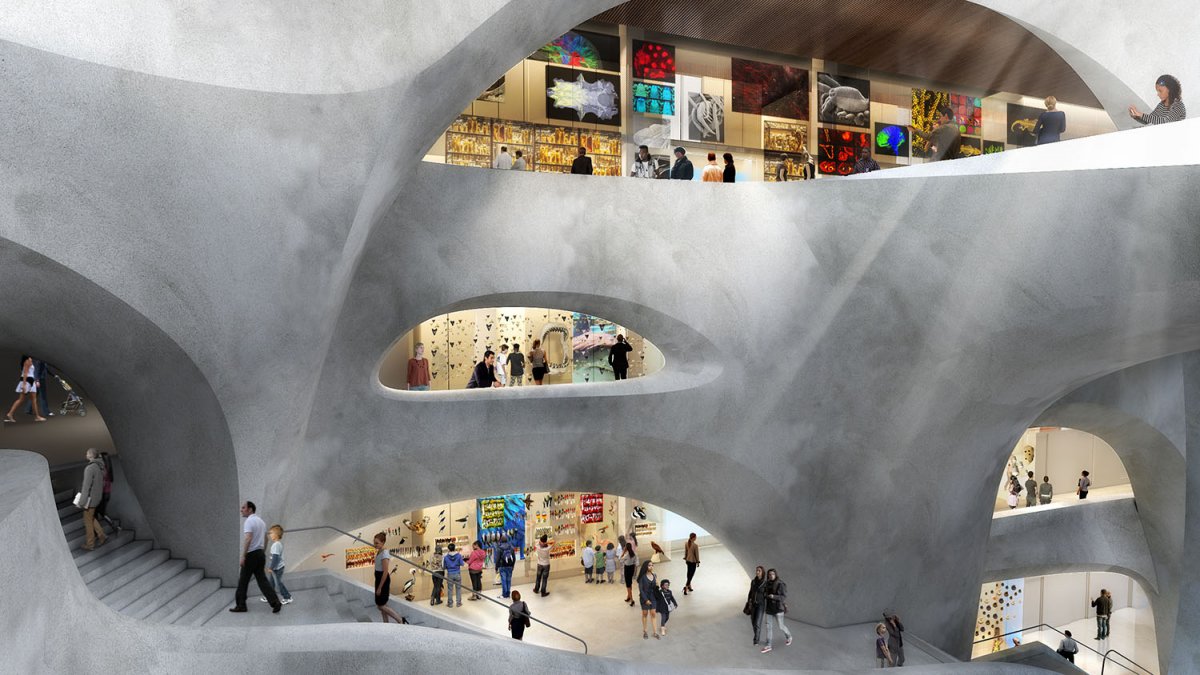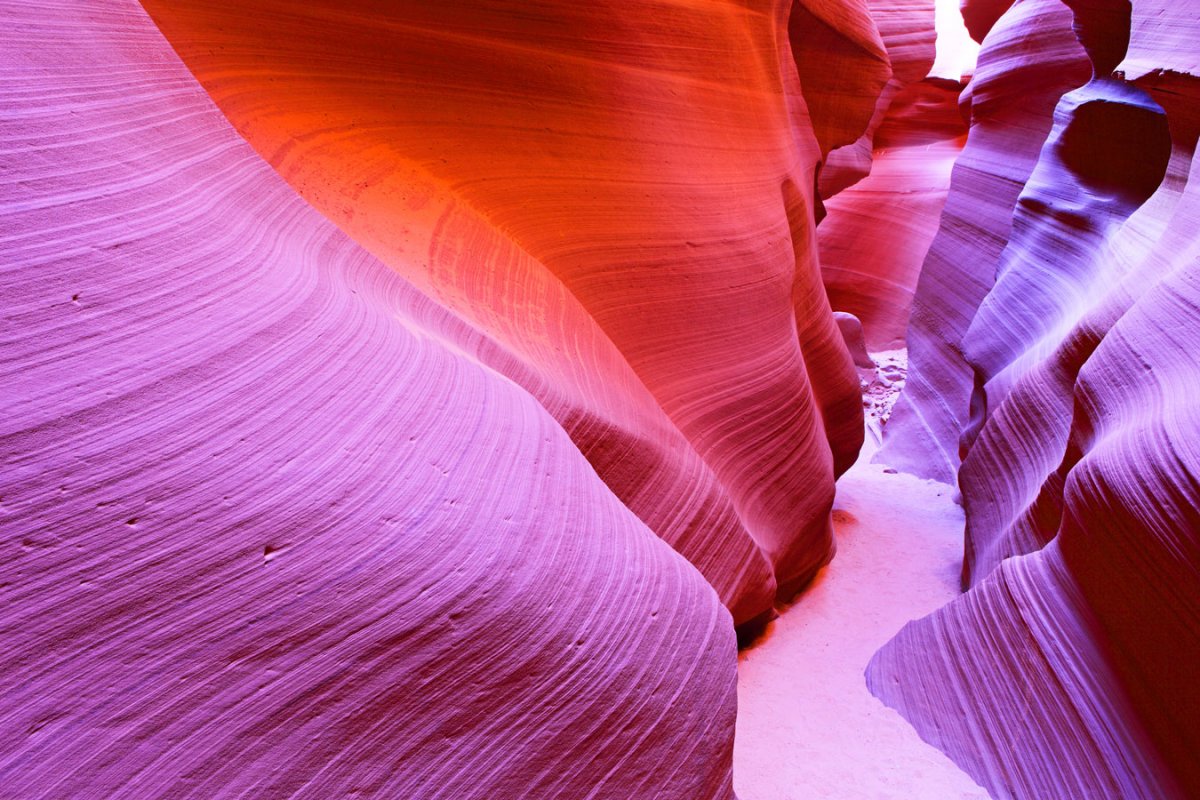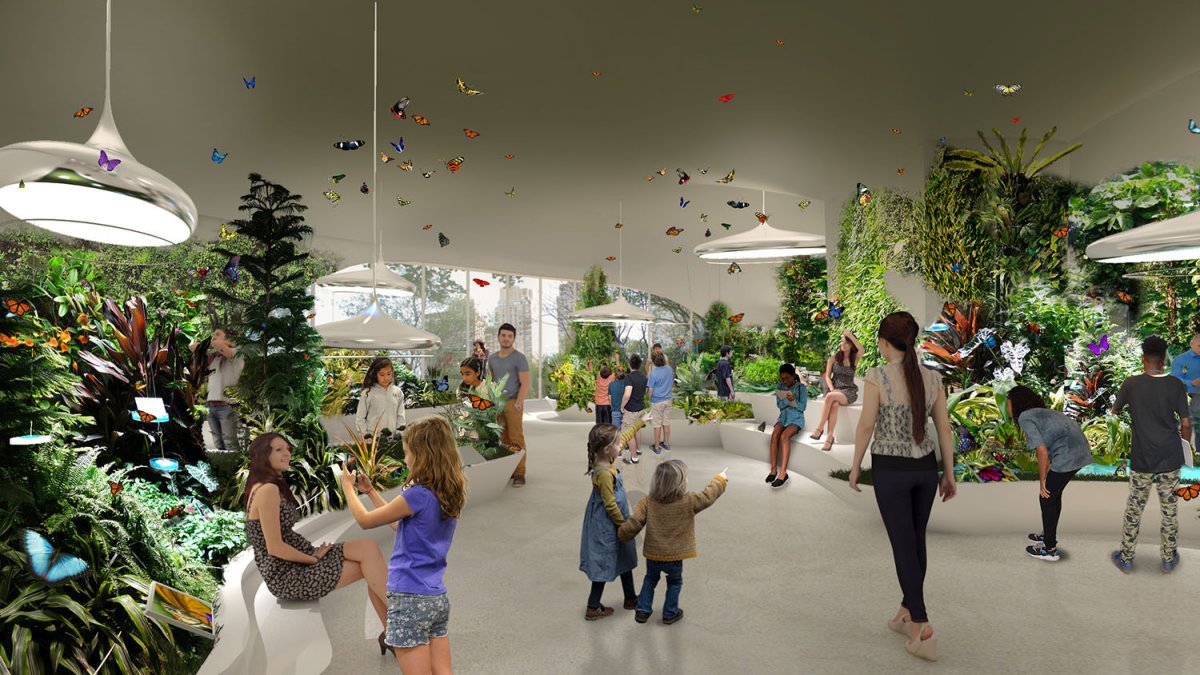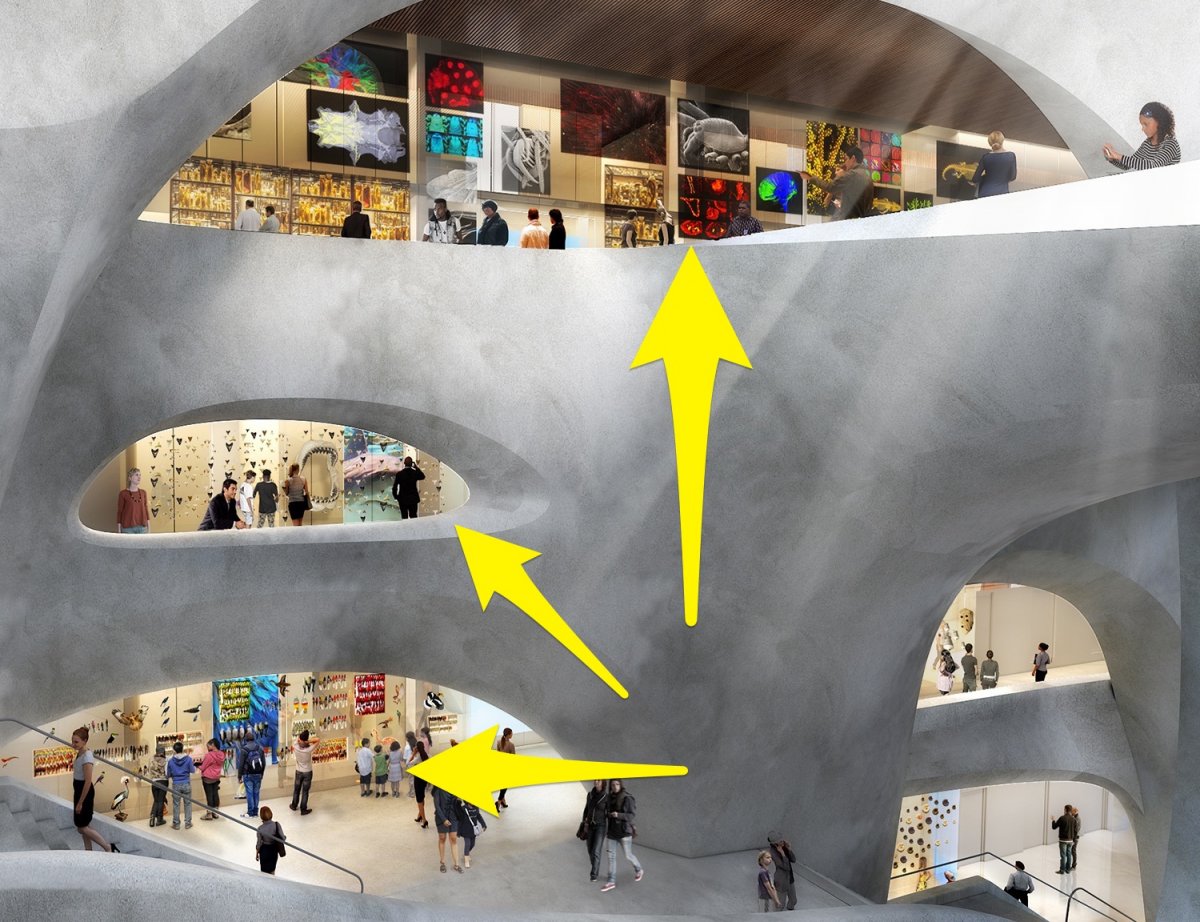The American Museum of Natural History (AMNH) is known among New Yorkers as "the dinosaur museum."
It's the gorgeous old museum that Ben Stiller explores in "Night at the Museum" — the one with room after room of hulking dinosaur skeletons:
 AP Photo/Bebeto Matthews
AP Photo/Bebeto Matthews
Even if you've never been, you've probably heard of it. The museum has existed in one form or another since the 1870s, which means it's coming up on a big birthday: 150 years! As such, the museum's board is embarking on a $340 million, 235,000-square-foot addition to the already sprawling museum.
Plans for the addition were announced on Wednesday morning in a press conference. Here's what we learned.
This is the current model for the new "Richard Gilder Center for Science, Education, and Innovation."
American Museum of Natural History/D. Finnin The project's chief architect, Jeanne Gang, demonstrated the model during an event at the American Museum of Natural History on Wednesday morning.
The new center will serve "some 500,000 school children a year, and approximately 4,000 K-12 science teachers," AMNH president Ellen Futter said.AP Photo/Richard Drew Rather than focusing on one particular subject, the center instead focuses on education.
This is the conceptualized entry to the new center, which sits alongside NYC's Theodore Roosevelt Park.Studio Gang Architects The interior design and structure is inspired by "natural environments," Jeanne Gang said.
Ralph Appelbaum Associates It's hard to mistake where that inspiration comes from: places like Antelope Canyon in Arizona come to mind.
In terms of exhibits, the current plan is to focus on insects and butterflies. This is the first floor "Insectarium," which is intended primarily for school tours. It features live bugs, interactive exhibits, and a massive bee hive.
The bee hive isn't real, of course.Ralph Appelbaum Associates On a lighter note, the second floor's "Butterfly Vivarium" will be a living butterfly sanctuary, with live plants and — of course — loads of butterflies.
The man in charge of planning exhibits, Ralph Appelbaum, said there'll be an augmented reality component to the Vivarium — that way you can capture a photo of that butterfly without worrying it'll fly away. Think "Pokémon GO," but butterfly photos.Ralph Appelbaum Associates The final area of focus for the new center is middle school education — specifically, grades 5-8. This area is intended for all students, but the AMNH is working with the NYC Department of Education to offer its lab as a stand-in for schools that don't have one.
Ralph Appelbaum Associates At the core of the building is a massive portion of the museum's research collection — the same stuff used by staff scientists for research!
Even though a massive amount of research will be on public display, it represents just one-tenth of the AMNH's research collection.Ralph Appelbaum Associates The center is a massive divergence from the traditional AMNH setup, featuring modern design aesthetics combined with a flexible, education-focused mix of exhibits. That stands in glaring contrast to the main building, which began construction in 1874.
Wikimedia Commons user 'Ingfbruno' The American Museum of Natural History is a massive, endlessly interesting landmark of New York City. Though the new center won't be open for another several years, the museum as it stands is beyond worth a visit. If you're interested, check out the museum's website right here.
 AP Photo/Bebeto Matthews
AP Photo/Bebeto Matthews
